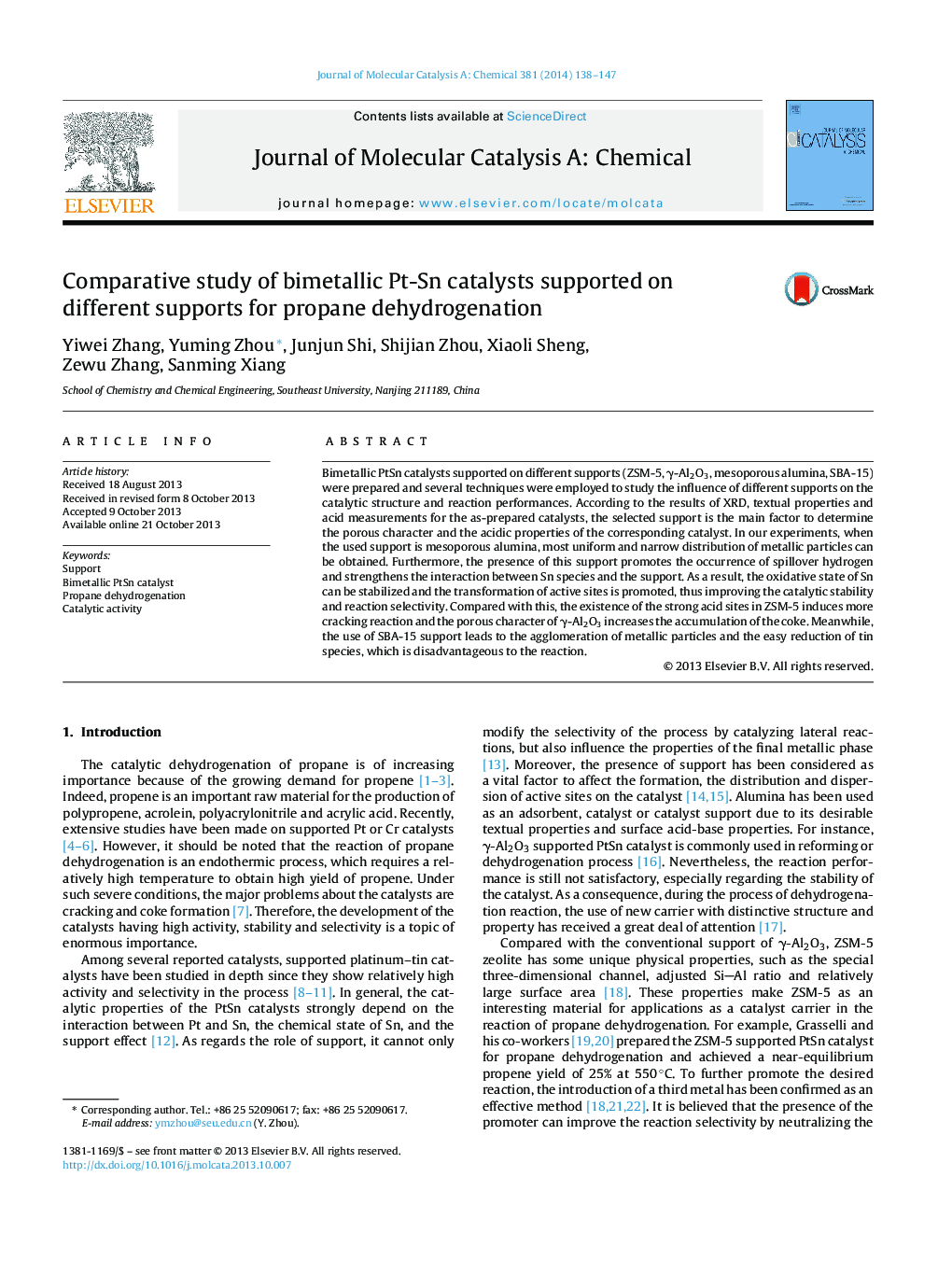| Article ID | Journal | Published Year | Pages | File Type |
|---|---|---|---|---|
| 65479 | Journal of Molecular Catalysis A: Chemical | 2014 | 10 Pages |
•PtSn catalysts supported on different supports are prepared.•Used support determines the porous character and the acidic properties of the catalyst.•Behaviors of metal dispersion and coking are obviously different on different supports.•Selected supports affect the reduction of tin species and the location of active sites effectively.•Mesoporous alumina supported catalyst exhibits the highest reaction stability and selectivity.
Bimetallic PtSn catalysts supported on different supports (ZSM-5, γ-Al2O3, mesoporous alumina, SBA-15) were prepared and several techniques were employed to study the influence of different supports on the catalytic structure and reaction performances. According to the results of XRD, textual properties and acid measurements for the as-prepared catalysts, the selected support is the main factor to determine the porous character and the acidic properties of the corresponding catalyst. In our experiments, when the used support is mesoporous alumina, most uniform and narrow distribution of metallic particles can be obtained. Furthermore, the presence of this support promotes the occurrence of spillover hydrogen and strengthens the interaction between Sn species and the support. As a result, the oxidative state of Sn can be stabilized and the transformation of active sites is promoted, thus improving the catalytic stability and reaction selectivity. Compared with this, the existence of the strong acid sites in ZSM-5 induces more cracking reaction and the porous character of γ-Al2O3 increases the accumulation of the coke. Meanwhile, the use of SBA-15 support leads to the agglomeration of metallic particles and the easy reduction of tin species, which is disadvantageous to the reaction.
Graphical abstractFigure optionsDownload full-size imageDownload high-quality image (116 K)Download as PowerPoint slide
